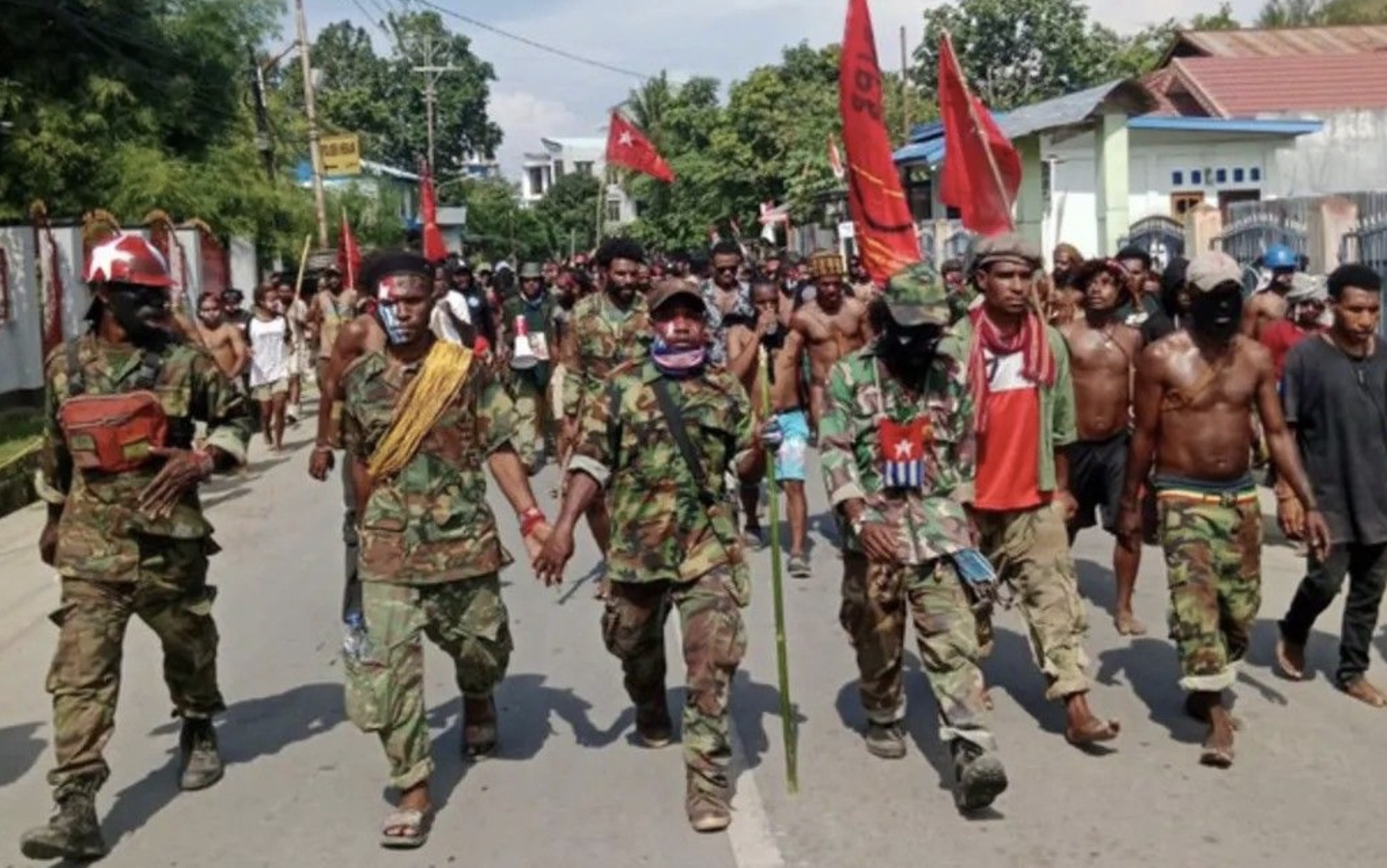The Indonesian province of West Papua is once again engulfed in violence. In May and June 2025, brutal clashes between the Indonesian military and the West Papua National Liberation Army (TPNPB) escalated sharply, leaving dozens dead—including innocent civilians caught in the crossfire. Yet despite the scale and severity of this conflict, it remains largely ignored by the global media. This ongoing war is not a distant footnote; it is a human tragedy fueled by colonial legacies, systemic oppression, and an international media blackout that refuses to acknowledge the reality on the ground.
The May 2025 Clashes: Blood on the Ground
On May 14, Indonesian forces launched a violent operation against suspected TPNPB fighters in Intan Jaya Regency, Central Papua. Official military reports claim 18 militants were killed. But alongside these figures, three civilians—RW, EW, and MT—lost their lives, with at least three others wounded in the chaos. The identities of seven more casualties remain unknown, lost amid conflicting accounts and the fog of conflict.
The TPNPB confirmed losses among their ranks, acknowledging several fighters killed or injured during the confrontation. Two days later, on May 16, TPNPB fighters killed two Indonesian police officers in Puncak Jaya Regency, demonstrating the conflict’s ongoing volatility.
June 2025: Renewed Fighting and Growing Danger to Civilians
The violence did not abate in June. Human Rights Watch reported renewed clashes between Indonesian military forces and West Papuan insurgents, highlighting an intensification of hostilities that threatens civilian lives. Villagers face increasingly restricted movement, limited access to humanitarian aid, and growing fear as military operations sweep through contested areas.
This resurgence marks a significant escalation in what has long been considered a low-intensity conflict. Indonesian authorities have responded by closing large swaths of West Papua to tourism and independent observers, further limiting transparency and trapping local populations in a growing security vacuum.
A Resurgence in the Struggle for Independence
The recent uptick in fighting is part of a broader resurgence in West Papua’s decades-old independence movement. After years of relative quiet, the struggle is intensifying, fueled by continued economic exploitation, cultural suppression, and human rights abuses under Indonesian rule.
For the Papuan people, this conflict is existential. Their call for self-determination is met with harsh military crackdowns and political repression. The Indonesian state’s refusal to engage in meaningful dialogue only deepens resentment and drives more young Papuans toward armed resistance.
Widespread Closures and the Silencing of West Papua
In response to the escalating conflict, the Indonesian government has shut down multiple regions within West Papua to tourists, journalists, and aid organizations. These closures—ostensibly justified on security grounds—effectively prevent independent scrutiny of military operations and human rights conditions.
By restricting access, the Indonesian state controls the narrative, suppressing reports of abuses and ensuring that global audiences remain unaware of the true situation. This media blackout perpetuates a dangerous invisibility, enabling abuses to continue unchecked and the voices of West Papuans to be drowned out.
Civilians Are Paying the Price
The human cost of this conflict cannot be overstated. Civilians live in constant fear, caught between military offensives and insurgent reprisals. Deaths and injuries among non-combatants, such as those in May’s Intan Jaya clashes, reveal the indiscriminate nature of the violence.
Access to essential services is severely disrupted. Medical aid, food supplies, and humanitarian assistance struggle to reach remote communities. The ongoing conflict has triggered displacement and deepened poverty, exacerbating an already dire humanitarian situation.
Click to read our report on the West Papua Insurgency.
Media Blackout: The West’s Willful Ignorance
One of the most striking features of the West Papua conflict is the collective indifference of legacy media outlets. Despite clear evidence of escalating violence and civilian suffering, international coverage remains scarce and superficial.
This silence is not accidental. Acknowledging West Papua’s plight means confronting uncomfortable truths about colonial legacies, neocolonial alliances, and the complicity of Western governments and corporations invested in Indonesia’s resource-rich territories.
The lack of independent journalism on West Papua allows Indonesia’s narrative to dominate, masking ongoing repression and human rights violations from global scrutiny .
What Must Change
For too long, West Papua has been treated as a peripheral issue, a “low-intensity conflict” safely ignored. Ending this silence is the crucial first step toward justice.
Media outlets must move beyond Indonesian state narratives and report on the lived realities of Papuans. International policymakers and human rights groups need to pressure Jakarta for transparency, accountability, and meaningful dialogue.
Ignoring West Papua’s struggle only perpetuates violence andsuffering. The world must listen to the voices long silenced.
Conclusion: West Papua Cannot Be Ignored
The May and June 2025 clashes are not mere statistics. They are a human tragedy unfolding in real time—one marked by bloodshed, injustice, and a desperate fight for freedom.
Legacy media’s failure to cover these events deepens West Papua’s invisibility on the global stage. This silence is political and complicit.
West Papua’s struggle is a test of global commitment to human rights and decolonization. Until the world breaks its silence, the violence will continue unchecked in the shadows.

